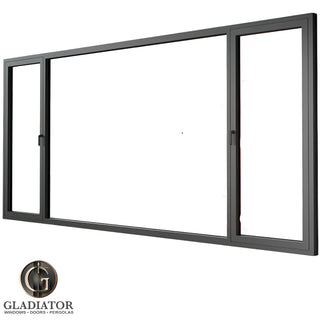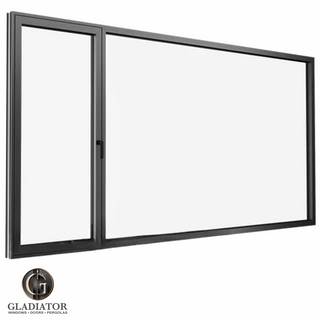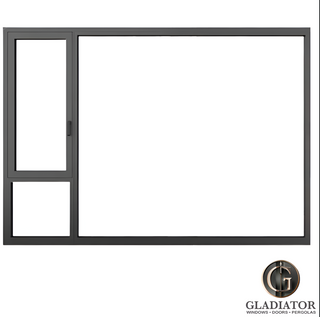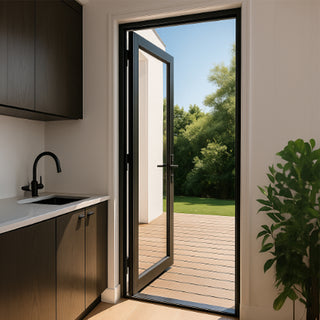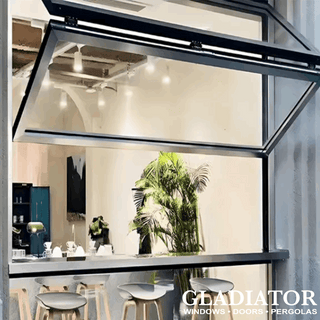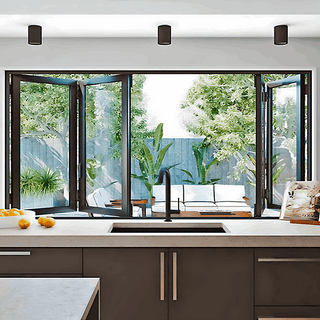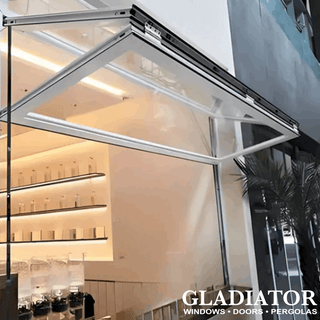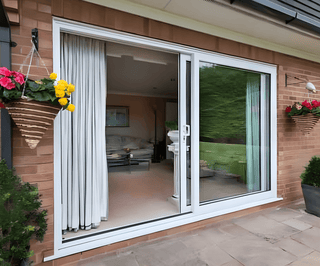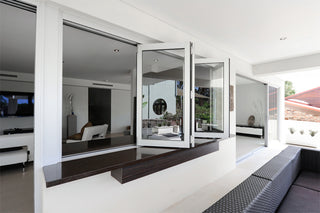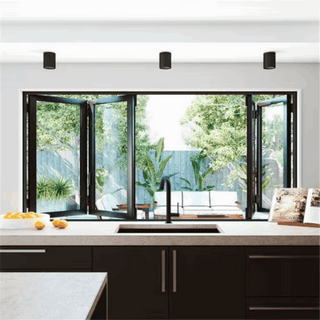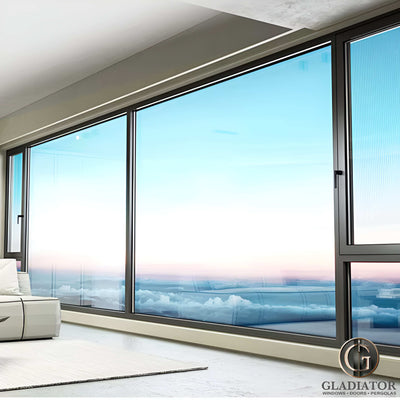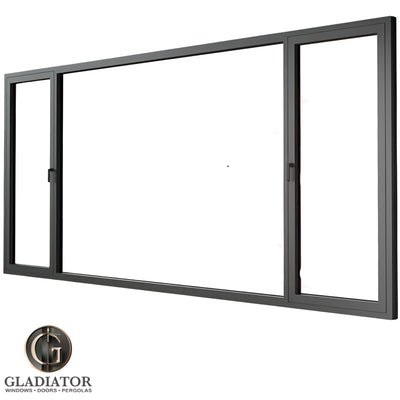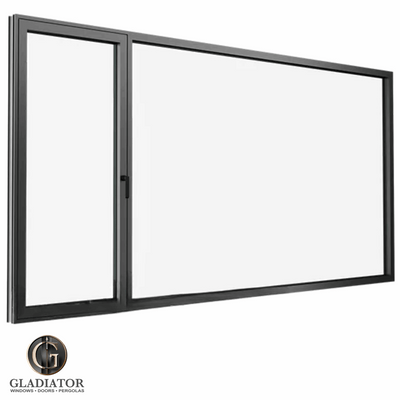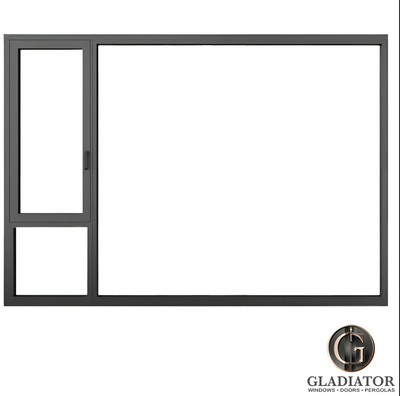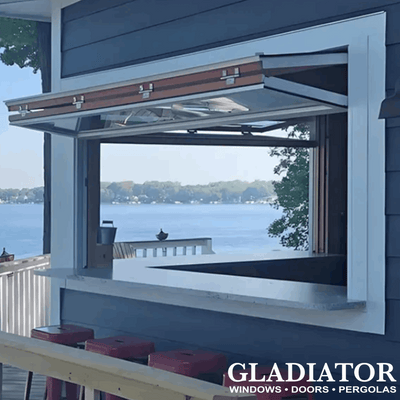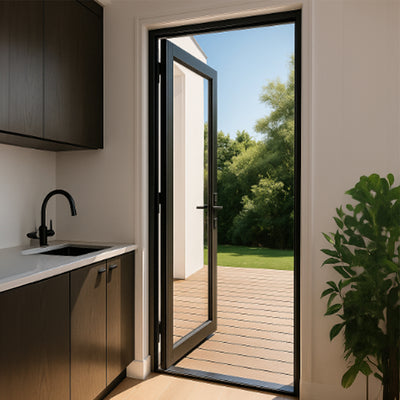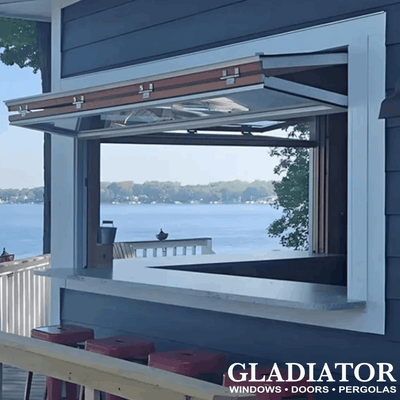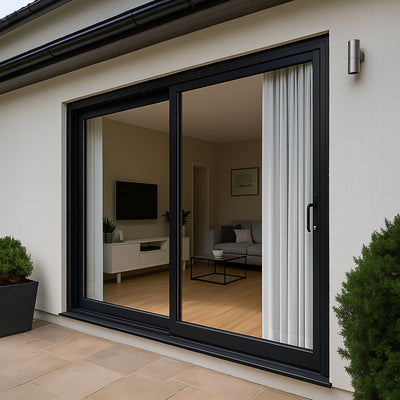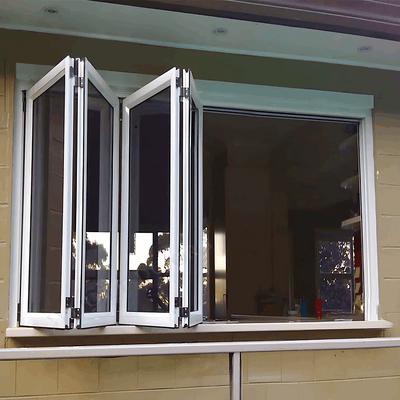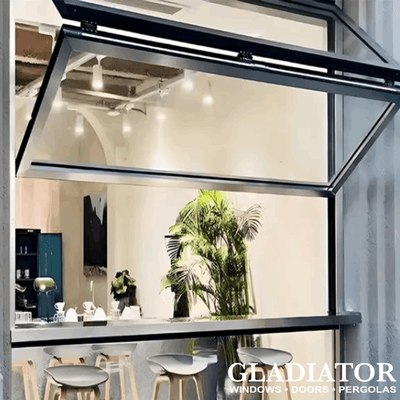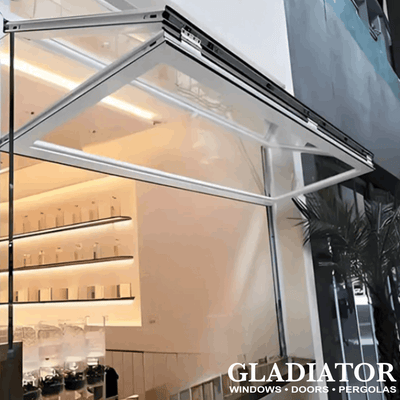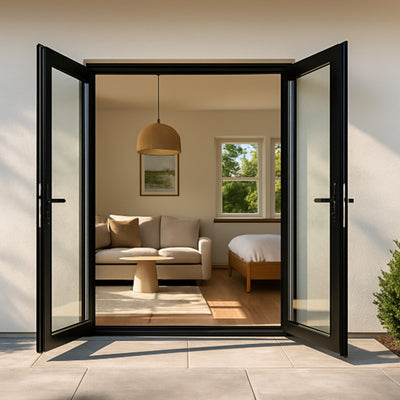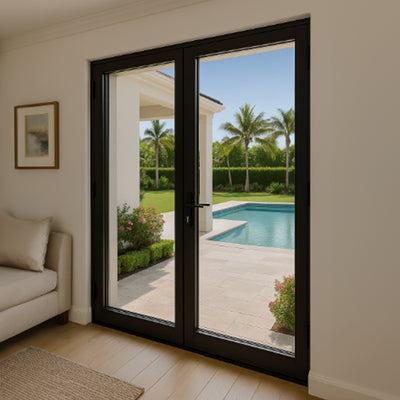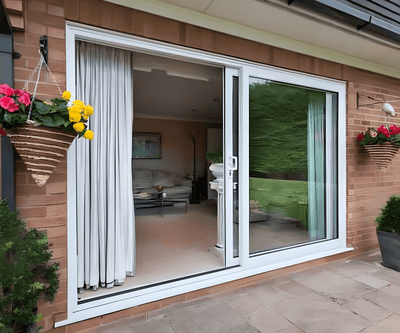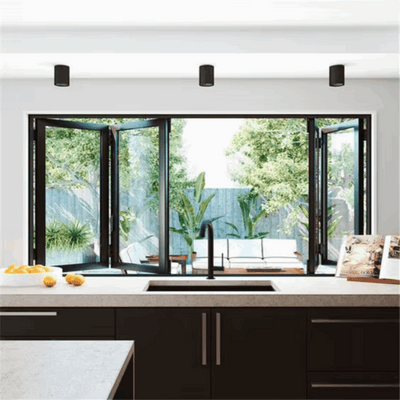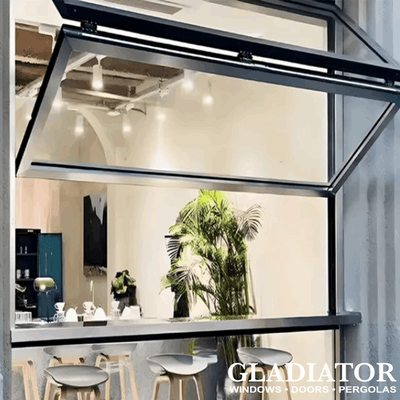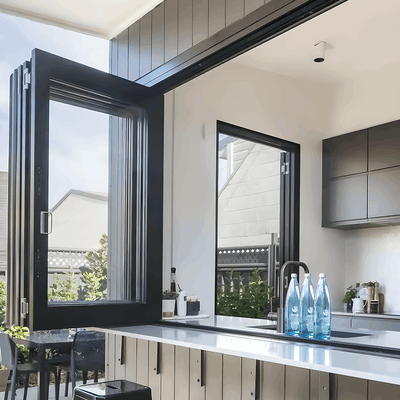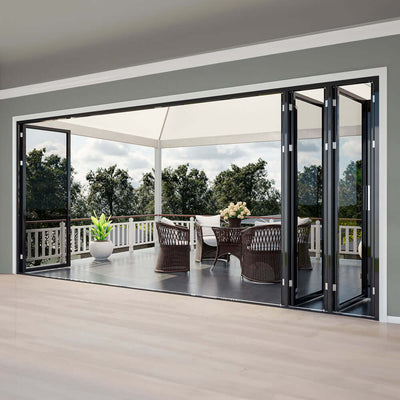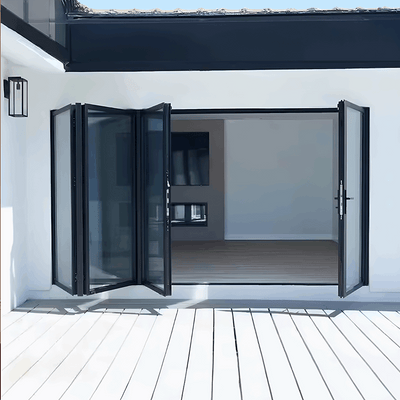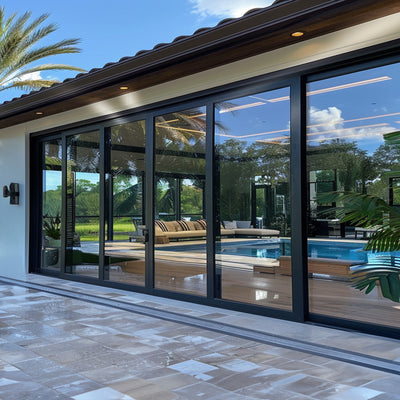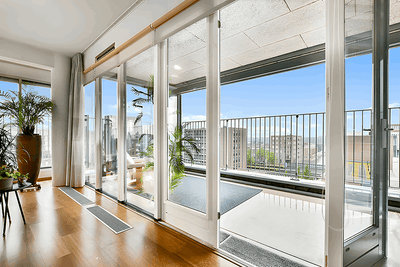Why Your Door Frame Is Your Home's Security Weak Point
Many homeowners invest in smart locks and advanced security systems, yet a crucial vulnerability often goes unnoticed: the door frame. Intruders know a strong lock is pointless if the frame itself is weak. This section explores why your door frame is frequently the weakest point in your home security and how reinforcing it significantly improves your protection.
How Door Frames Fail During Forced Entry
Standard door frames, especially those constructed from softer wood, are vulnerable to forced entry. Imagine a lever: the door acts as the lever arm, and the frame is the fulcrum. Sufficient force will splinter or break the frame around the lock, letting the door swing open even with a locked deadbolt. This creates a dangerous false sense of security, as even the strongest locks offer little protection if the frame gives way.
One common tactic is simply kicking the door in. A well-placed kick near the lock exploits the frame's weakness, granting quick entry. You can find more information on related topics on our sitemap. Reinforcing the door frame is crucial, especially around the strike plate, the metal plate on the frame where the deadbolt latch engages. Weak hinges are another vulnerability, allowing the door to be pried open.
The High Cost of a Weak Frame
The global focus on robust door systems is clear. The door frame market was valued at USD 74 billion in 2024 and is projected to reach USD 102.7 billion by 2034. Reinforcement plays a critical role in this market due to increasing security concerns. Statistics show approximately 34% of residential burglaries involve forced entry through doors, highlighting the importance of reinforced door frames. Learn more about door frame security insights here. This underscores that reinforcing your door frame isn't just about peace of mind; it's about protecting your home and possessions.
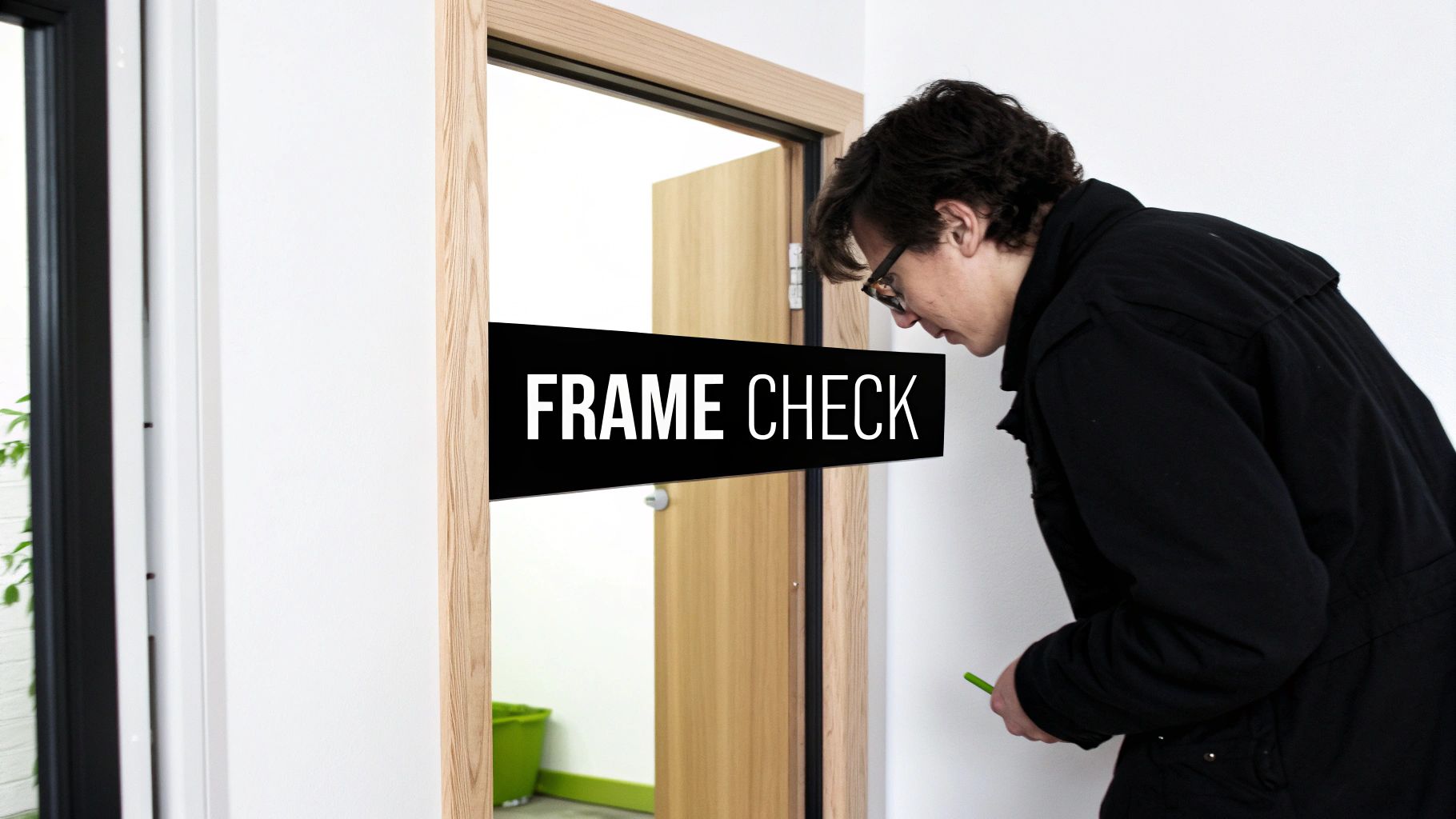
Addressing these vulnerabilities creates a more substantial barrier against intruders and significantly strengthens your home security. The next section will discuss how to assess your current door frame for weaknesses and identify areas needing reinforcement.
Assessing Your Door Frame's Vulnerabilities
Before reinforcing your door frame, it's essential to assess its current vulnerabilities. This involves a careful inspection to identify weak points that could be exploited during a break-in. This is similar to the process security professionals use when evaluating home security. Understanding these vulnerabilities will help you select the most effective reinforcement techniques.
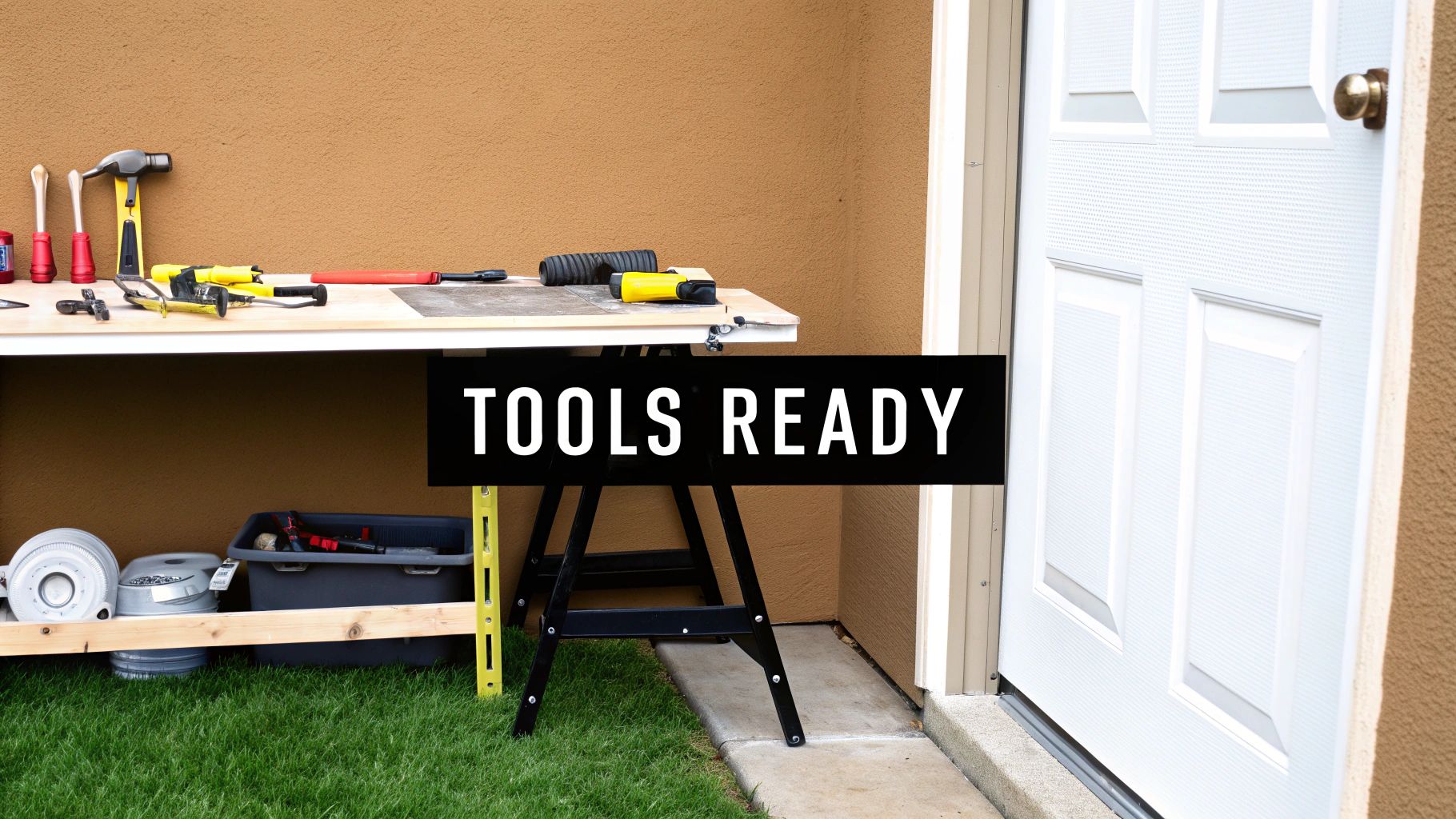
Key Areas to Inspect
Several key areas of your door frame demand close attention. These are common targets for intruders and should be checked thoroughly:
- Door Jamb: Look for any rot, warping, or damage, particularly around the strike plate and hinges. These can compromise the frame's structural integrity.
- Strike Plate: Ensure it’s securely fastened with long screws (at least 3 inches) that penetrate into the wall studs. A loose strike plate makes forced entry much easier.
- Hinges: Just like the strike plate, hinges should be attached with long screws reaching into the studs. Weak hinges make a door an easy target.
- Door Material: The material of your door matters. Solid core doors offer greater resistance than hollow-core doors. Some materials, such as steel, inherently provide better protection.
- Gaps Around the Door: Excessive gaps between the door and frame make it easier to pry the door open. Minimize these gaps for improved security.
- Deadbolt Lock: Your deadbolt should be an ANSI/BHMA-certified Grade 1 or Grade 2 and have a bolt throw of at least one inch. This provides an important extra layer of security.
To make this inspection process easier, we've compiled a helpful checklist:
Door Frame Vulnerability Assessment Checklist: A comprehensive checklist to help homeowners evaluate their current door frame condition and identify security weaknesses.
| Area to Inspect | What to Look For | Security Risk Level | Action Required |
|---|---|---|---|
| Door Jamb | Rot, warping, or damage (especially around the strike plate and hinges) | High if significant damage is present | Repair or replace damaged sections |
| Strike Plate | Loose screws, short screws (less than 3 inches) | High if not secured with long screws into studs | Replace with longer screws (3 inches minimum) |
| Hinges | Loose screws, short screws | Medium to High | Replace with longer screws |
| Door Material | Hollow-core door | Medium | Consider upgrading to a solid-core door |
| Gaps Around the Door | Large gaps between door and frame | Medium to High | Add weather stripping or sealant to reduce gaps |
| Deadbolt Lock | Non-existent, Grade 3 deadbolt, short bolt throw | High | Install or replace with a Grade 1 or 2 deadbolt with at least a one-inch throw |
This checklist allows you to systematically evaluate your door frame and prioritize necessary improvements. Focusing on these key areas can significantly enhance your door's resistance to forced entry.
Recognizing Warning Signs
Even subtle signs can indicate a weakened frame. Hairline cracks, for instance, might point to structural issues. This is especially important for older homes or frames exposed to harsh weather. Even seemingly minor installation oversights, like short screws in the strike plate, can significantly reduce resistance to kick-in attempts.
Material Considerations
Different frame materials present unique security challenges. Wood frames, especially older ones, are susceptible to rot and can be easily damaged. Reinforcement methods will therefore vary depending on whether your frame is made of wood, metal, or composite materials. Understanding these nuances helps determine the best approach.
Reinforcing a door frame is a proactive measure for increasing your home security. By carefully evaluating your door frame’s weaknesses, you can select the right reinforcement methods. These methods, which we'll discuss further, will provide a higher level of protection for your home and greater peace of mind. Learn more about door reinforcement at Gladiator Window and Doors.
The Security Pro's Toolkit for Door Frame Reinforcement
Reinforcing your door frame is crucial for enhancing home security. But simply grabbing any hardware off the shelf won't cut it. Effective reinforcement begins with selecting the right tools and materials. This guide, drawing on insights from security installers and law enforcement, highlights the key components that truly bolster your defenses. We'll help you separate marketing fluff from real protection, guiding you toward smart investments. You might be interested in: How to master...
Essential Hardware for Effective Reinforcement
Here’s what you'll need:
-
Reinforced Strike Plate: Forget standard strike plates. Opt for a heavy-duty version with a longer lip (at least four inches) secured with 3-inch or longer screws driven into both the door jamb and the framing studs. This fortifies the connection between the door and frame, making forced entry much harder. Some reinforced strike plates offer up to 800% greater resistance than standard ones.
-
Heavy-Duty Hinges: Just like the strike plate, your hinges should be robust and secured with 3-inch screws reaching into the wall studs. Consider security hinges with non-removable pins to prevent intruders from simply lifting the door off its hinges.
-
Door Jamb Reinforcement Kit: These kits typically include metal plates or wraps that reinforce the door jamb, providing extra support against spreading or splitting. They're especially useful for older or weaker frames.
-
Solid-Core Door: While not technically part of the frame, the door itself is essential. If you have a hollow-core door, upgrading to a solid-core door dramatically increases resistance to forced entry.
Choosing the Right Materials
Material selection also matters. For wooden frames, denser hardwoods like oak offer increased strength. When choosing reinforcement materials, consider durability. Knowing the typical lifespan of oak furniture can inform your decisions about wood reinforcement options: how long does oak furniture last Reinforcing a door frame greatly enhances a building's security, a need reflected in the growing global door frame market. Valued at USD 115.53 billion in 2023, this market is projected to reach USD 164.91 billion by 2033, with a CAGR of 7.2%. This growth stems from increased construction, urbanization, and a rising demand for both security and energy-efficient solutions. Find more detailed statistics here.
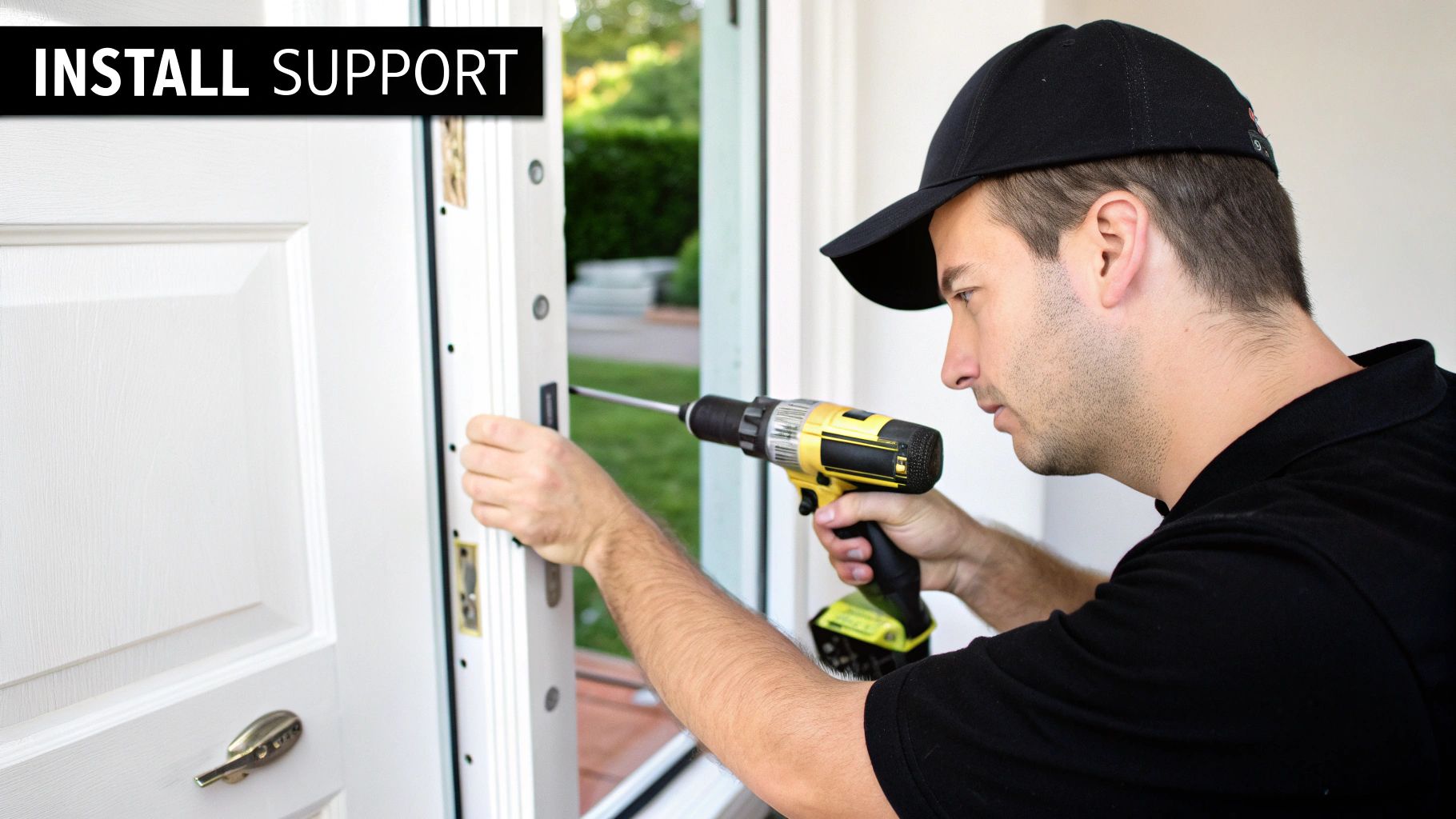
Building a Complete Security System
Remember, reinforcing your door frame isn't just about individual improvements. It's about building a comprehensive security system. The right hardware, strong materials, and proper installation work together to provide the best protection. This approach transforms your door from a vulnerability into a robust barrier against intruders. The next section will detail the step-by-step process for implementing these reinforcements effectively.
Step-by-Step Reinforcement Techniques That Actually Work
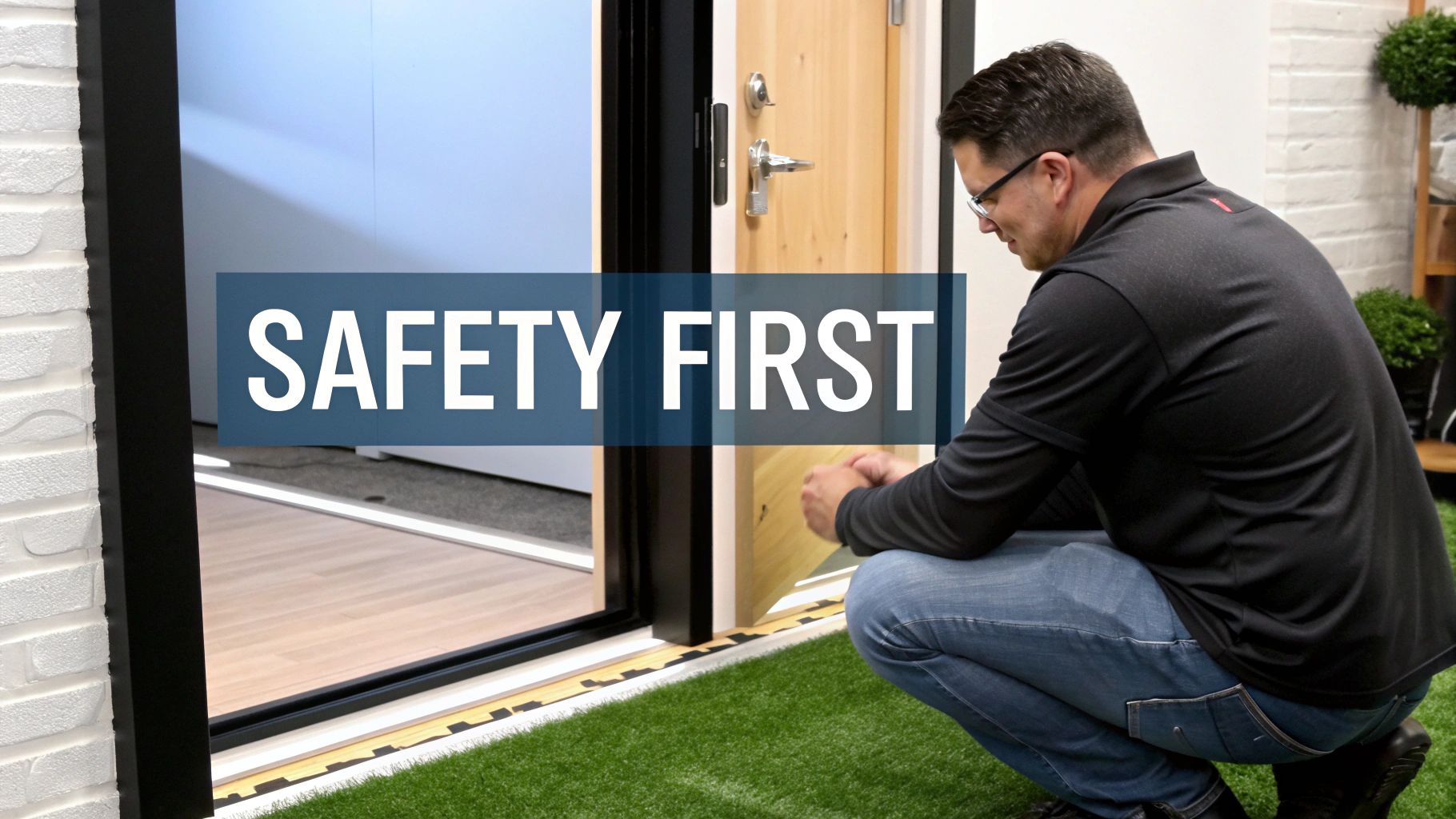
Now that we've gathered our tools and materials, let's dive into the reinforcement process. This section provides a step-by-step guide to reinforcing your door frame, using techniques employed by security professionals. These methods will significantly improve your home security.
Reinforcing the Door Jamb
The door jamb is the most important area to reinforce. It's the main point of contact during a forced entry attempt. Strengthening it significantly increases your door's resistance.
-
Step 1: Prepare the Jamb: Make sure the jamb is free of rot or damage. Repair or replace any damaged sections before you begin. This creates a solid base for the reinforcement.
-
Step 2: Install Jamb Reinforcers: Use a door jamb reinforcement kit, which usually contains metal plates or wraps. Place these along the jamb, focusing on the area around the strike plate and hinges. Secure them with long screws (at least 3 inches) that go into the wall studs. This helps distribute the force of an attack.
-
Step 3: Verify the Fit: Check that the door still opens and closes smoothly after installing the reinforcers. You might need to make adjustments to ensure proper alignment.
Upgrading the Strike Plate
The strike plate is another weak point. Standard strike plates are often secured with short screws that only attach to the door jamb, not the studs. This makes them easy to remove.
-
Step 1: Remove the Old Strike Plate: Unscrew and remove the existing strike plate. Check the screw holes and surrounding wood for any damage.
-
Step 2: Install the Reinforced Strike Plate: Position the new, heavy-duty strike plate (with a lip of at least four inches) over the opening. Secure it with 3-inch or longer screws, making sure they go into the wall studs. This provides much greater resistance against forced entry.
-
Step 3: Test the Deadbolt Engagement: Make sure the deadbolt latch engages securely with the new strike plate. The bolt should extend fully into the strike plate without any issues.
Reinforcing the Hinges
Hinges are often overlooked, but they are vital for door security. Weak hinges make it easy to pry a door open.
-
Step 1: Inspect Existing Hinges: Check if your hinges are sturdy and attached with long screws. Look for any damage or loose screws.
-
Step 2: Upgrade if Necessary: If your hinges are weak or poorly secured, replace them with heavy-duty hinges and use 3-inch screws. Consider using security hinges with non-removable pins, although this is more complex. You might be interested in: How to master your door reinforcement project
-
Step 3: Check Hinge Alignment: Make sure the hinges are aligned correctly and the door swings smoothly after reinforcement.
To help you choose the right reinforcement method for your needs, take a look at the comparison table below:
Comparison of Door Frame Reinforcement Methods
A detailed comparison of various reinforcement techniques, their effectiveness, cost, and difficulty level
| Reinforcement Method | Security Level | Cost Range | Installation Difficulty | Best For |
|---|---|---|---|---|
| Door Jamb Reinforcement Kit | High | $20-$50 | Easy | All doors |
| Heavy-Duty Strike Plate | Medium | $10-$20 | Easy | Exterior doors |
| Heavy-Duty Hinges | Medium | $15-$30 | Easy | Exterior and interior doors |
| Security Hinges (Non-Removable Pins) | High | $25-$50 | Moderate | High-security areas |
This table highlights the different levels of security offered by each method, along with their associated costs and installation difficulty. As you can see, some methods are easier to install than others, while some offer a higher level of security.
Common reinforcement methods include using heavy-gauge steel, adding metal plates around lock areas, and using longer screws. Building codes and construction standards now often require minimum reinforcement, especially in commercial and government buildings. Learn more about the window and door market. By following these steps, you can make your door frame much more secure, protecting your home and family.
Advanced Protection Strategies for High-Risk Situations
Reinforcing a door frame with standard techniques offers a good level of security. However, in high-risk situations, you might need to consider more advanced protection strategies. This section explores professional-grade solutions that go beyond the basics, adapting techniques used in high-security environments for residential use. We'll delve into integrated approaches that combine physical reinforcement with other strategic modifications for comprehensive protection.
Integrating Physical Reinforcement With Strategic Design
True security isn't just about stronger hardware; it's about a holistic approach. This means integrating physical reinforcements with smart design choices to create a layered defense. For example, consider installing security film on windows near the door. This film makes it significantly harder to break the glass, delaying or deterring intruders altogether.
Additionally, strategic landscaping, such as thorny bushes beneath windows, can act as a natural deterrent. These simple additions can significantly bolster your home's security.
Professional-Grade Solutions vs. Overengineering
While it’s tempting to opt for the most expensive solutions, it’s crucial to discern between meaningful security improvements and unnecessary overengineering. A high-quality, reinforced strike plate and long screws offer substantial protection at a reasonable cost. Investing in a solid-core door is another effective upgrade.
However, installing a steel door frame in a residential setting might be overkill unless you face exceptionally high risks. More about Gladiator Window and Doors It's crucial to tailor your approach to reinforcing a door frame based on your specific security needs. Technological advancements, such as Artificial Intelligence (AI), are also playing a role. A 2021 study demonstrated how AI can be used to design reinforcements for improved performance. Discover more insights about this research here.
Tiered Protection Based on Risk Profile
Just as cybersecurity professionals use tiered protection, you can apply a similar concept to physical security. Start by assessing your risk profile. Are you in a high-crime area? Do you have valuable possessions? Your answers will help you determine the appropriate level of reinforcement.
-
Low Risk: Standard reinforcement techniques, such as a reinforced strike plate and longer screws, might suffice.
-
Medium Risk: Consider additional measures like security film on windows and a security system.
-
High Risk: Implement more advanced strategies, such as upgrading to a solid-core door, reinforcing the jamb with metal plates, and exploring professional security consultations. A tailored approach ensures your security measures are appropriate for your specific circumstances.
The Psychology of Deterrence
Visible reinforcements, like a robust strike plate and security cameras, can act as powerful deterrents. This is because criminals often look for easy targets. A visibly reinforced door frame signals that your home is not an easy mark, encouraging them to move on.
This preemptive deterrence is a key benefit of a well-reinforced door, potentially stopping a break-in before it even starts. These advanced strategies provide a robust defense against determined intruders, offering increased protection for your home and peace of mind.
Maintaining Your Security Edge Through Regular Upkeep
A reinforced door frame is a substantial investment in your home's security. But even the strongest systems can weaken over time without proper care. Security experts stress that regular maintenance is essential for long-term protection. This section will guide you through a systematic inspection and maintenance routine, much like those used by security consultants, to keep your reinforced door frame in peak condition.
Regular Inspection: Spotting the Early Warning Signs
Just like a car, your reinforced door frame needs regular checkups. This proactive approach helps catch potential issues early, preventing costly repairs or security breaches. Start by visually inspecting these key components:
- Door Jamb: Check for rot, warping, or cracks, especially near the strike plate and hinges. These could signal structural problems.
- Strike Plate: Make sure the screws are tight. If the strike plate is loose, tighten the screws right away. Stripped screws should be replaced with longer, stronger ones.
- Hinges: Look for loose screws or signs of wear on the hinges. Lubricate them regularly for smooth operation.
- Door and Frame Alignment: Ensure the door fits snugly in the frame and doesn't stick. Misalignment can point to a problem with the hinges or the frame.
- Hardware: Inspect all hardware, including deadbolts, locks, and any extra security devices, for damage or malfunction.
Seasonal Maintenance: Adapting to Changing Conditions
Seasonal changes can impact your door frame's performance and security. Temperature swings can cause wood to expand and contract, potentially loosening screws or creating gaps. Adjust your maintenance routine with the seasons:
- Spring: Look for winter weather damage, like cracks or warping. Tighten loose screws and lubricate hinges.
- Summer: Ensure good ventilation to avoid moisture buildup, which can lead to rot. Inspect weather stripping for wear.
- Autumn: Check and clean weather stripping to get ready for winter. Make sure all hardware is working correctly.
- Winter: Protect your door frame from harsh weather with a sealant or weather-resistant coating. Seal any gaps to improve energy efficiency.
Simple Maintenance Techniques for Long-Term Effectiveness
Maintaining your reinforced door frame isn’t complicated. Simple steps can greatly extend the life and effectiveness of your door.
- Tighten Screws: Regularly check and tighten all screws on the strike plate, hinges, and other hardware.
- Lubricate Hinges: Lubricate your door hinges every few months to prevent squeaking and ensure smooth operation.
- Inspect and Replace Weather Stripping: Damaged weather stripping can compromise security and energy efficiency. Replace it as needed.
Check out our guide on How to master... for more tips.
Knowing When to Upgrade: Strategic Improvements Over Repairs
While maintenance extends the life of your door frame, sometimes upgrades are more practical than repairs. If the door jamb is badly rotted, replacing it might be a better long-term solution than patching it. If your hardware is old or damaged, upgrading to newer, more secure options can significantly improve your protection. For added security against forced entry, explore the Ultimate Guide to Metal Siding.
By following these maintenance tips and knowing when to upgrade, you can ensure your reinforced door frame provides lasting security. This proactive approach keeps your home safe against threats and environmental changes. For strong doors and a great warranty, visit Gladiator Window and Doors. We offer custom-made, thermally rated, and USA-approved products.


















